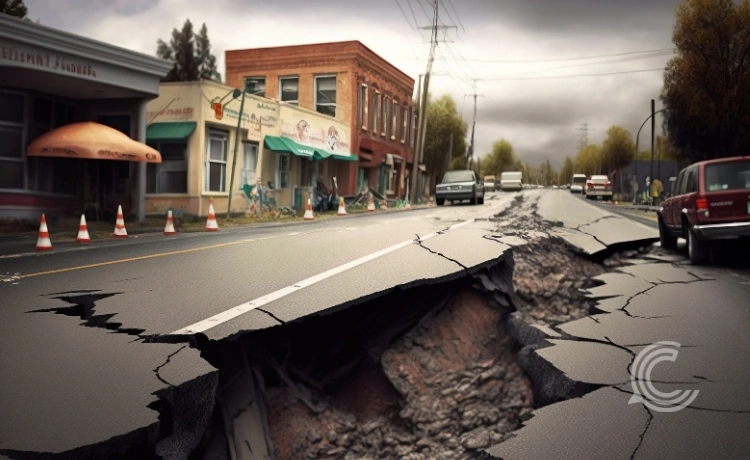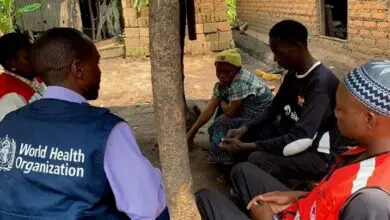7.4-Magnitude Earthquake Hits Southern Philippines, Tsunami Alert Lifted

Key Highlights–
- A 7.4-magnitude earthquake struck offshore Davao Oriental, killing at least two people.
- Structural damage was reported to homes, bridges, and public buildings; residents were warned of strong aftershocks.
- Tsunami warnings were issued and later lifted; authorities continue rescue and assessment operations.
A powerful magnitude 7.4 offshore earthquake struck the southern region of the Philippines late Friday, causing immediate structural damage, triggering widespread panic, and sadly, resulting in at least two confirmed fatalities. While initial concerns over a major tsunami led authorities to issue alerts for coastal areas, those warnings for the Philippines and Indonesia were later lifted, allowing residents who had evacuated to higher ground to return home.
The seismic event, one of the strongest to impact the archipelago in recent years, occurred in the waters off the town of Manay in Davao Oriental province. The full extent of the damage is still being assessed across the affected islands, but initial reports indicate significant localized destruction.
Strongest Quake in Recent Memory Rattles Residents
Civil defense official Karlo Puerto confirmed by telephone that two people were killed in Mati City, a population center situated very close to the earthquake’s center, as reported by Reuters.
The tremors were felt intensely across the southern island of Mindanao. Many residents described an alarming and prolonged shaking. Richie Diuyen, a disaster official in Manay, recounted the experience, noting the quake lasted a frightening 30 to 40 seconds. “We couldn’t stand earlier. I am 46 years old now, and this is the strongest earthquake I ever felt,” Diuyen told reporters by phone.
Also Read | US, Qatar, and Turkey Join Third Day of Gaza Peace Talks in Egypt
Footage verified by several news agencies showed the intensity of the shaking, with people in Davao City calmly holding onto parked vehicles that were clearly rocking from side to side. Metal gates nearby rattled loudly as the ground moved violently. Reports from local communities detail the impact: damaged homes, a church façade compromised, cracked roads, and bridges rendered temporarily unpassable, complicating immediate rescue and assessment efforts.
Urgent Warnings and Government Response
The country’s seismology agency, Phivolcs, initially placed the magnitude at 7.6 before revising it down slightly to 7.4, with a depth of 23 kilometers (14 miles). Crucially, the agency also issued a strong warning of intense aftershocks, some potentially reaching as high as magnitude 6.4, and urged people in affected coastal areas to continue exercising extreme caution.
Additionally, the national government immediately mobilized a response. Earlier in the day, President Ferdinand Marcos Jr. released a statement assuring the public that authorities were assessing the situation. “We are working around the clock to ensure that help reaches everyone who needs it,” the President affirmed, highlighting that search-and-rescue teams would be deployed as soon as the danger from aftershocks subsided enough to ensure their safety.
A Nation on the Pacific Ring of Fire
The sheer frequency and intensity of the Philippines’ earthquake activity are a constant threat rooted in its unique geography. The nation sits squarely on the Pacific “Ring of Fire,” a volatile geological belt where over 800 earthquakes are recorded each year, making the region highly susceptible to major seismic events.
This most recent shock comes just two weeks after the Philippines faced its deadliest earthquake in over a decade. That magnitude 6.9 offshore quake on the central island of Cebu sadly claimed 74 lives, according to reports from BBC News, underlining the constant vulnerability of the islands to tectonic movements.
Verified footage from Indonesia’s island of Sulawesi, which was within the tsunami alert zone, showed residents reacting to the alert. Furthermore, fishing boats were seen returning from sea while children played on a beach from which the water had temporarily receded, illustrating the immediate coastal evacuation measures put in place across the wider region before the tsunami warning was ultimately lifted. As rescue teams fan out across Davao Oriental and Mati City, the focus now shifts to aiding survivors, providing shelter, and beginning the long process of infrastructure repair and recovery.



